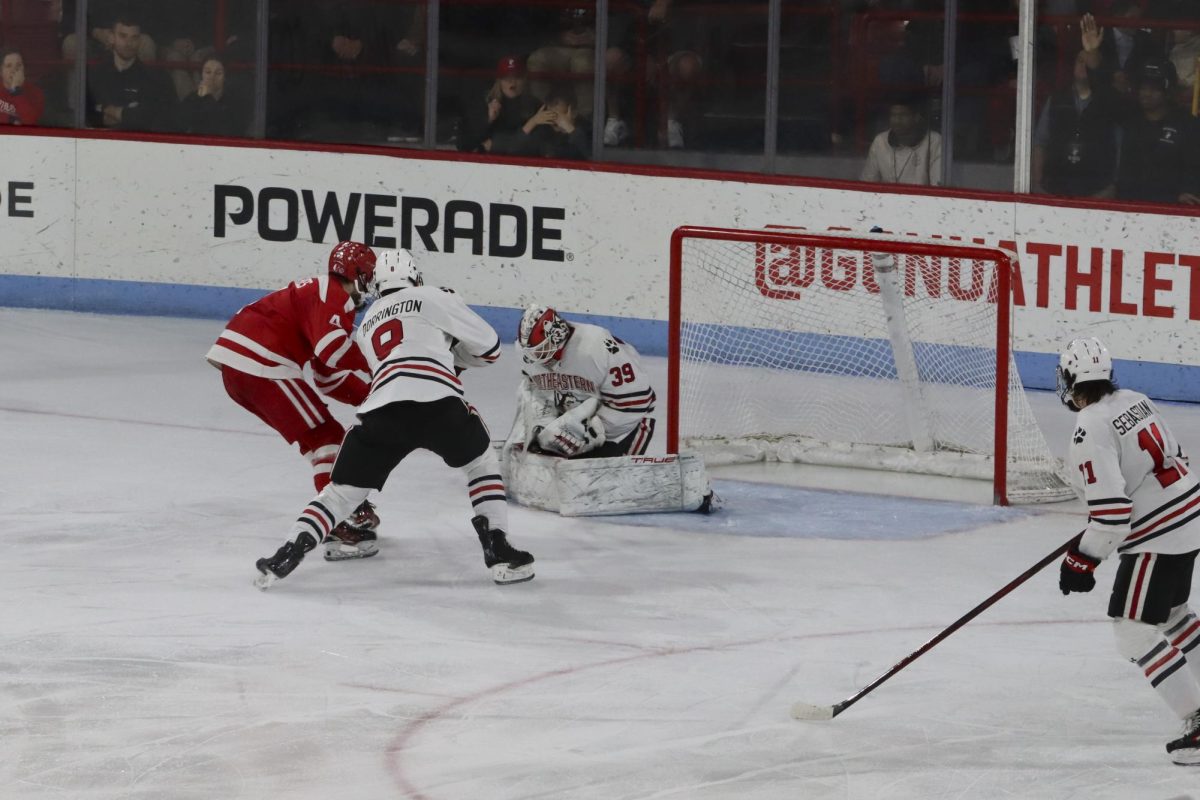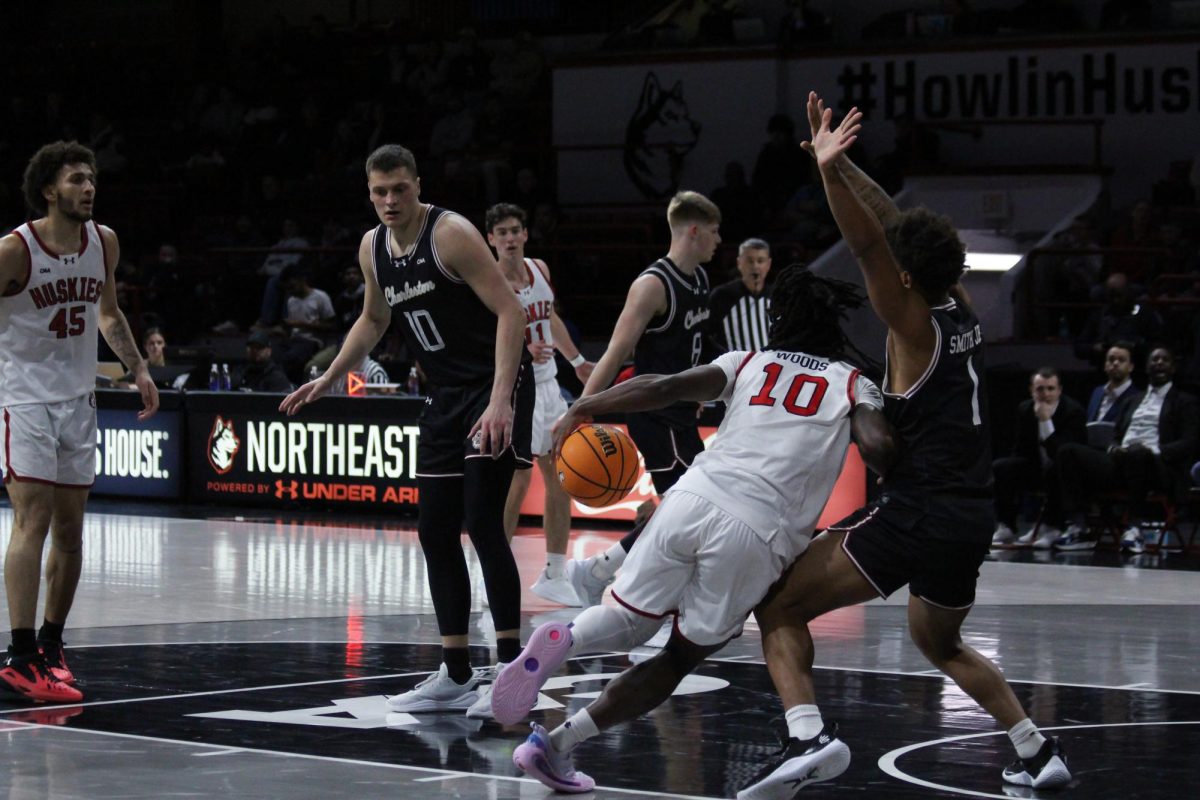By: Alex Faust, Columnist
Conference realignment isn’t just for the big boys. Even in our niche world of college hockey, the landscape of conference affiliations is changing before our very eyes. While most of the turmoil has occurred out west, one potential change is hitting close to home: Multiple reports this off-season verified that serious discussions were taking place about a possible move for Notre Dame to the Hockey East.
At Hockey East media day Tuesday, the subject was barely broached, but several signs showed the forces at play: Conference Commissioner Joe Bertagna acknowledged that a scheduling model is not in place past March 2013 as he waits for moves to be made, and a TV schedule was not announced as the details will be finalized with regional, and potentially national, broadcast partners.
When the Big Ten announced that it would form a six-team league made up of its hockey-playing schools, it sent many programs into a frenzy. Through a combination of panic and self-preservation, college hockey saw a depleted Western Collegiate Hockey Association, College Hockey America, nearly destroyed Central Collegiate Hockey of America (CCHA), and the creation of a new National Collegiate Hockey Conference (NCHC) in the span of three months, to take effect in 2013. On top of that, the fact that a team 95 miles outside of Chicago is interested in joining a conference entirely based in New England speaks to the dog-eat-dog world of conference realignment.
One of the CCHA’s most prominent members is Notre Dame, a behemoth in every sense of the word (and this year’s preseason #1-ranked hockey team). While their football program has fallen to disappointing lows, make no mistake: They are still one of the most powerful names in college athletics, and they compete for championships in every sport. They have a lot of money and potential influence at their disposal, not the least of which is TV eyeballs.
So it comes as no surprise that Hockey East Commissioner Joe Bertagna was quoted as saying this summer that “the subject is so sensitive right now,” which is not only true for him, but for each one of Hockey East’s member schools.
Logistically, the move would wreak havoc with what many perceive to be the most stable conference in college hockey. Currently, each team plays 27 conference games, but with the addition of Notre Dame, the conference would be forced to implement a rotational schedule (employed by Northeastern’s all-sport conference, the CAA) or a divisional structure, both of which would work best with an even 12 teams, instead of 11.
While 10 teams might be the perfect number right now, consider this: Unless Northeastern participates in an “exempt” tournament (such as those in Alaska or the season-opening Icebreaker), there are only seven non-conference games available – five when you don’t count the Beanpot. So while we enjoy the flexibility and convenience of 10 teams within driving distance during the Hockey East portion of the season, the current format severely limits opportunities to get wins outside of conference play.
Think of the horrendous start Northeastern had last season. Then-head coach Greg Cronin scheduled an out-of-conference slate in the fall loaded with winnable home games (on paper, at least). As we know, things didn’t go according to plan. The Huskies tied eventual NCAA tournament participant RPI, then weeks later lost games consecutively to Holy Cross, Bentley and Niagara in a dizzying 8-day span. And just like that, nearly the entire non-conference schedule was finished, in the blink of an eye.
Even this year, coach Jim Madigan will have his hands full with road trips to Michigan, Minnesota and, ironically, Notre Dame.
The prospect of reducing the number of conference games has an appeal: Broaden the availability of non-conference contests; get teams to travel east that you don’t play often; take advantage of an opportunity for team bonding with a long road trip. Pairing those benefits with the addition of a high-caliber team such as Notre Dame looks like a great idea, but naturally it has drawbacks.
The first concern for schools is the cost of expansion. While Notre Dame has deep pockets and may be able to cover travel expenses (as both Alaskan programs do now), there is no guarantee they will. Furthermore, opening the door for more non-conference games may mean that in order to get better teams to travel west, Northeastern will have to front some of the expenses involved, or be willing to visit less prominent programs such as those in the bottom half of the ECAC or Atlantic Hockey.
The second concern is how these changes impact college hockey on the whole. What does it mean for teams that have yet to find a home for 2013? What does it mean for programs who have experienced financial hardship in the past? Is college hockey due for another contraction, following the death of teams at Iona, Fairfield and Wayne State?
Just as realignment has been on the minds of college football and basketball fans this past season, college hockey is in the middle of an upheaval the likes of which we’ve never seen before.









